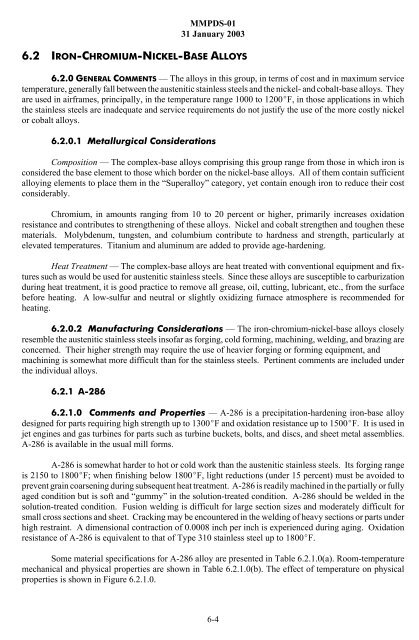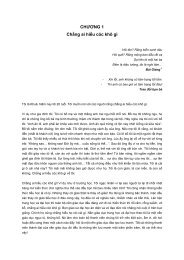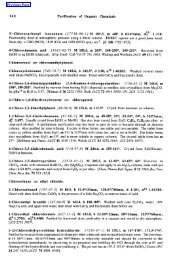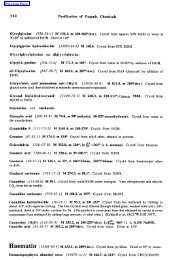Inconel 600.pdf
Inconel 600.pdf
Inconel 600.pdf
Create successful ePaper yourself
Turn your PDF publications into a flip-book with our unique Google optimized e-Paper software.
MMPDS-01<br />
31 January 2003<br />
6.2 IRON-CHROMIUM-NICKEL-BASE ALLOYS<br />
6.2.0 GENERAL COMMENTS — The alloys in this group, in terms of cost and in maximum service<br />
temperature, generally fall between the austenitic stainless steels and the nickel- and cobalt-base alloys. They<br />
are used in airframes, principally, in the temperature range 1000 to 1200EF, in those applications in which<br />
the stainless steels are inadequate and service requirements do not justify the use of the more costly nickel<br />
or cobalt alloys.<br />
6.2.0.1 Metallurgical Considerations<br />
Composition — The complex-base alloys comprising this group range from those in which iron is<br />
considered the base element to those which border on the nickel-base alloys. All of them contain sufficient<br />
alloying elements to place them in the “Superalloy” category, yet contain enough iron to reduce their cost<br />
considerably.<br />
Chromium, in amounts ranging from 10 to 20 percent or higher, primarily increases oxidation<br />
resistance and contributes to strengthening of these alloys. Nickel and cobalt strengthen and toughen these<br />
materials. Molybdenum, tungsten, and columbium contribute to hardness and strength, particularly at<br />
elevated temperatures. Titanium and aluminum are added to provide age-hardening.<br />
Heat Treatment — The complex-base alloys are heat treated with conventional equipment and fixtures<br />
such as would be used for austenitic stainless steels. Since these alloys are susceptible to carburization<br />
during heat treatment, it is good practice to remove all grease, oil, cutting, lubricant, etc., from the surface<br />
before heating. A low-sulfur and neutral or slightly oxidizing furnace atmosphere is recommended for<br />
heating.<br />
6.2.0.2 Manufacturing Considerations — The iron-chromium-nickel-base alloys closely<br />
resemble the austenitic stainless steels insofar as forging, cold forming, machining, welding, and brazing are<br />
concerned. Their higher strength may require the use of heavier forging or forming equipment, and<br />
machining is somewhat more difficult than for the stainless steels. Pertinent comments are included under<br />
the individual alloys.<br />
6.2.1 A-286<br />
6.2.1.0 Comments and Properties — A-286 is a precipitation-hardening iron-base alloy<br />
designed for parts requiring high strength up to 1300EF and oxidation resistance up to 1500EF. It is used in<br />
jet engines and gas turbines for parts such as turbine buckets, bolts, and discs, and sheet metal assemblies.<br />
A-286 is available in the usual mill forms.<br />
A-286 is somewhat harder to hot or cold work than the austenitic stainless steels. Its forging range<br />
is 2150 to 1800EF; when finishing below 1800EF, light reductions (under 15 percent) must be avoided to<br />
prevent grain coarsening during subsequent heat treatment. A-286 is readily machined in the partially or fully<br />
aged condition but is soft and “gummy” in the solution-treated condition. A-286 should be welded in the<br />
solution-treated condition. Fusion welding is difficult for large section sizes and moderately difficult for<br />
small cross sections and sheet. Cracking may be encountered in the welding of heavy sections or parts under<br />
high restraint. A dimensional contraction of 0.0008 inch per inch is experienced during aging. Oxidation<br />
resistance of A-286 is equivalent to that of Type 310 stainless steel up to 1800EF.<br />
Some material specifications for A-286 alloy are presented in Table 6.2.1.0(a). Room-temperature<br />
mechanical and physical properties are shown in Table 6.2.1.0(b). The effect of temperature on physical<br />
properties is shown in Figure 6.2.1.0.<br />
6-4











